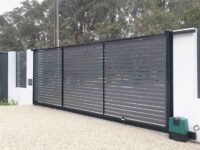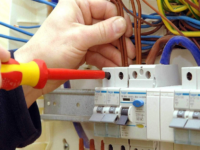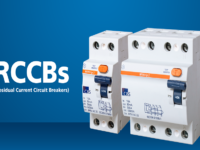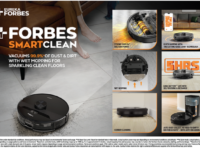Gate hardware essentials: hinges, latches and locks explained
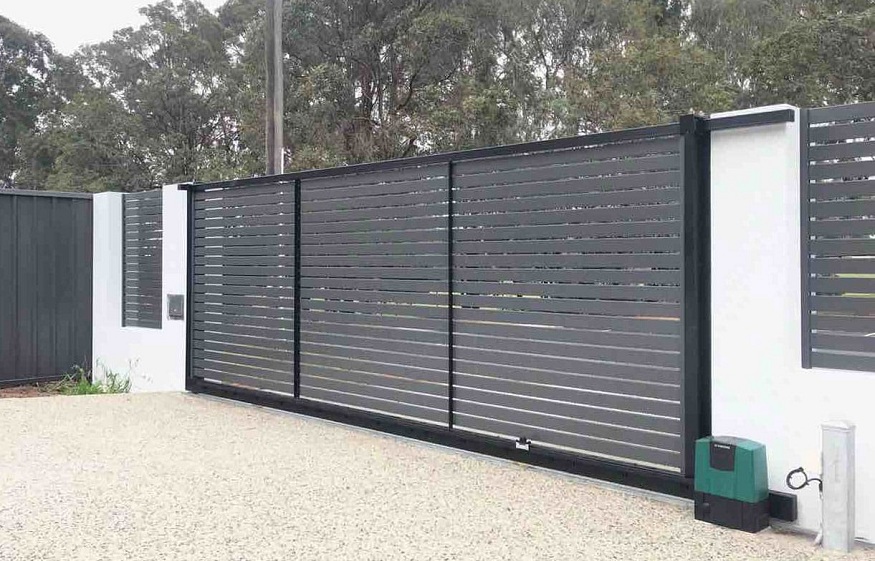
Choosing the right hardware is what makes a automatic gates Perth feel solid, safe and easy to live with. Hinges carry the weight, latches handle daily use, and locks protect access. Good gear also stands up to weather, salt air and the odd knock from a wheelie bin.
Why hinges come first
Every decision flows from the hinge. The hinge sets the swing line, controls sag and determines how the gate copes with wind. A light garden gate might be fine on a pair of tee hinges. A heavier driveway leaf needs adjustable, ball-bearing or pivot hinges so you can fine-tune alignment after posts settle. For rural and steel frames, gudgeon and strap sets offer high load capacity and straightforward adjustment without pulling the gate down.
Common hinge formats and where they fit
You will see strap and gudgeon, butt, tee, rising, spring and pivot hinges in catalogues. Ball-bearing butt hinges deliver smooth movement on mid-weight timber gates. Rising hinges lift slightly as the gate opens, handy on sloping paths. Spring hinges add a self-closing action for side passages. For a clean look on square-edge metal frames, flag or lift-off hinges allow removal for maintenance. These types are widely available from Australian hardware merchants and specialist suppliers. If you are pairing a light frame with sheet infill, many builders choose aluminium to keep weight down, which aligns with what buyers of aluminium gates Perth often seek: low mass with corrosion resistance.
Latches that work every day
A latch should shut positively without slamming and open one-handed. Gravity and ring latches suit side gates. For higher security, use a padbolt with a shrouded padlock or a key-operated latch. Pool gates are a special case: they must be self-closing and self-latching and swing away from the pool area. AS 1926.1 also sets barrier and gap dimensions, so check your layout before drilling any holes.
Pool-safe latch placement
Beyond self-closing gear, latch release height matters. Recent updates tightened guidance so a latch needs to be at least 1500 mm above finished ground and at least 1400 mm above any nearby foothold or surface that could be used for climbing. This helps keep latch buttons out of reach of young children. Use quality closers, test the self-close from fully open, and recheck seasonally.
Locks that actually secure a gate
For pedestrian gates, a mortice lock in a steel or hardwood stile gives the neatest result, with euro cylinders allowing rekeying to match the house. Where a full mortice is impractical, rim locks and security latch sets are robust alternatives. Australian lock performance is covered by AS 4145.2 for mechanical locksets and related parts, so look for hardware that’s been tested to those requirements when safety and durability are priorities.
Materials and finishes that last
Corrosion shortens hardware life more than anything. Hot-dip galvanised steel is economical for inland suburbs. In coastal or poolside environments, upgrade to stainless steel, and specify grade 316 over 304 where you can. The extra molybdenum in 316 improves resistance to chlorides, which is why it is preferred in marine conditions and anywhere exposed to salt or splash. Regular rinsing and a quick soap wash help even the best grades hold their finish.
Basics of powered and access-controlled gates
Motor-ready hardware changes the spec. Heavier hinges or bottom rollers, positive latching or magnetic locks, cable management and rigid posts all matter once a motor is added. When planning controls, ensure safety devices such as photo-eyes and sensing edges are included, and confirm your installer follows AS/NZS 60335.2.103 for powered drives. Those standards address hazards from moving leafs and set electrical and mechanical safety requirements for gate automation Perth.
Hardware for sliding systems
Sliding gates Perthgates need a different kit: ground track or cantilever carriages, guide rollers, end stops, and a sturdy latch or electric striker. Keep the track clear of gravel and leaf litter to avoid derailment, and specify sealed bearings for long service. Where space is tight on a narrow verge, a cantilever carriage avoids ground tracks entirely.
Safety and compliance for powered gates
Powered gates must stop and reverse on contact and should be paired with guards to keep hands clear of pinch points. A manual release is essential during power outages. These are not optional nice-to-haves; they reflect the safety expectations embedded in AS/NZS 60335.2.103 and related guidance for installers of electric gates Perth. Ask for the commissioning checklist and keep it with your manuals.
Installation and upkeep: small habits, big lifespan
Set posts in line, plumb and well braced. Dry-fit hardware before final drilling. Use stainless or galvanised fixings throughout, and apply an anti-seize compound on stainless threads. After installation, lubricate moving parts lightly, check closer tension, and tighten fixings at the change of seasons. In bushfire-prone or cyclonic areas, follow local wind and ember attack guidelines when selecting materials and fixing methods.
Quick reference: matching hinge to job
| Gate type | Typical hinge choice | Why it works | Notes |
| Light timber side gate | Tee or spring hinge | Simple, economical, can self-close | Add a soft-close closer near pool zones |
| Mid-weight courtyard gate | Ball-bearing butt | Smooth action, compact profile | Use three per leaf for taller gates |
| Heavy steel frame | Gudgeon & strap or pivot | High load capacity, adjustable | Suits rural and driveway entrances |
| Sloping path | Rising hinge set | Lifts leaf to clear ground | Needs careful alignment |
| Motorised swing | Heavy-duty adjustable | Resists racking under motor load | Add positive stops and safety sensors |
Treat the hinge, latch and lock as a matched set and you will get a gate that feels right under hand, stays aligned and meets Australian expectations for safety. Choose materials for your environment, tick off the relevant standards, and keep a simple maintenance routine. That approach delivers fewer call-backs and a gate that earns its keep for years.

